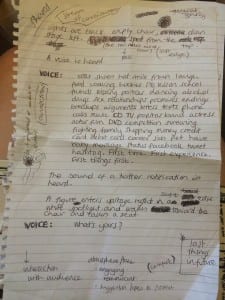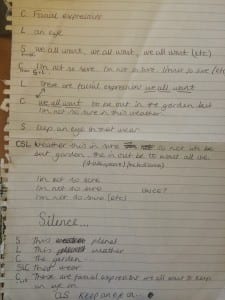In Matt Chewiwie’s artistic statement he explains that an artist once said that ‘life is a big nasty vicious dragon’ but then admits that he doesn’t know who made that particular statement (Chewiwie, 2008). Chewiwie also declares, ‘I see myself more of an entertainer’ than an artist and speaks about not taking himself too seriously (Chewiwie, 2008). His work for example, consists of videoing himself switching on a lightbulb and falling off a ladder, attempting to run on water and inventing animated YouTube videos mimicking his friends, previous famous computer games or celebrities.
Chewiwie’s intentions are to make people feel, (laugh or cry etc.) and once this is achieved he feels as though his job is done. In comparison to Marina Abramovic’s work, she intends to ‘transform herself’ as opposed to transforming the audience (O’Hagan, 2010). However, the renovation of the audience occurs when they cry or feel angry etc. It is this transformation that is not intended but comes naturally to the audience. Abramovic claims that ‘you’re an artist if you wake up in the morning and you are obsessed to create and you have the urge to create’ (Louisiana Channel, 2013). Of course this is just Abramovic’s opinion on the definition of an artist. Her work shows that she is clearly obsessed and desperate to create considering the amount of pressure and self inflicted pain that she puts upon herself, in order to push boundaries.
In the Oxford Dictionary, an artist is one who is ‘skilled at a particular task or occupation’ (2014). This definition suggests that an artist is someone who is talented or creative at what they do and are not specifically artists just because they have the ability to do it. Regarding both Chewiwie and Abramovic, they do not show any particular skill within their work. Okay, Chewiwie can evidently use a camera and a computer and Abramovic can sure enough push her mind and body to extreme lengths and endure pain over a period of hours, days, weeks and months. It can be said that the pair are both artists as they have each created or invented something in particular, but is this enough? Are they indeed, skilled?
In my opinion, Abramovic is an artist not because of her work but because of her beliefs in her work. She is self-assured of her intentions and of course herself. It is this “taking the self seriously” that I believe matters. Like Chewiwie, if one does not take himself seriously enough, then the odds are no-one else will either. For one who states that he is ‘dictated by [his] inner child’ evidently shows Chewiwie has a more jovial approach to creating art (Chewiwie, 2008).
In addition, I don’t believe that it takes someone else to label another as an artist in order for them to become one. For me, Abramovic is and Chewiwie is not an artist, but that doesn’t mean that my opinion stands correct. For me, there is no right and wrong and I believe that art is in the eye of the beholder as the perception of art is subjective.
Chewiwie, Matt (2008) Matt Chewiwie’s Artistic Statement [online][YouTube] <Accessed 28th February 2014> Available at: https://www.youtube.com/watch?v=4yJPZfFOrsc
Louisiana Channel (2013) Marina Abramovic – Advice to the Young [Online][YouTube] <Accessed 28th February 2014> Available at: https://www.youtube.com/watch?v=8Ck2q3YgRlY
O’Hagan, Sean (2010) ‘Interview: Marina Abramovic’, The Guardian [Online] <Accessed 28th February 2014> Available at: http://www.theguardian.com/artanddesign/2010/oct/03/interview-marina-abramovic-performance-artist
The Oxford Dictionary (2014) Artist [Online] <Accessed 28th February 2014> Available at: http://www.oxforddictionaries.com/definition/english/artist?q=artist

